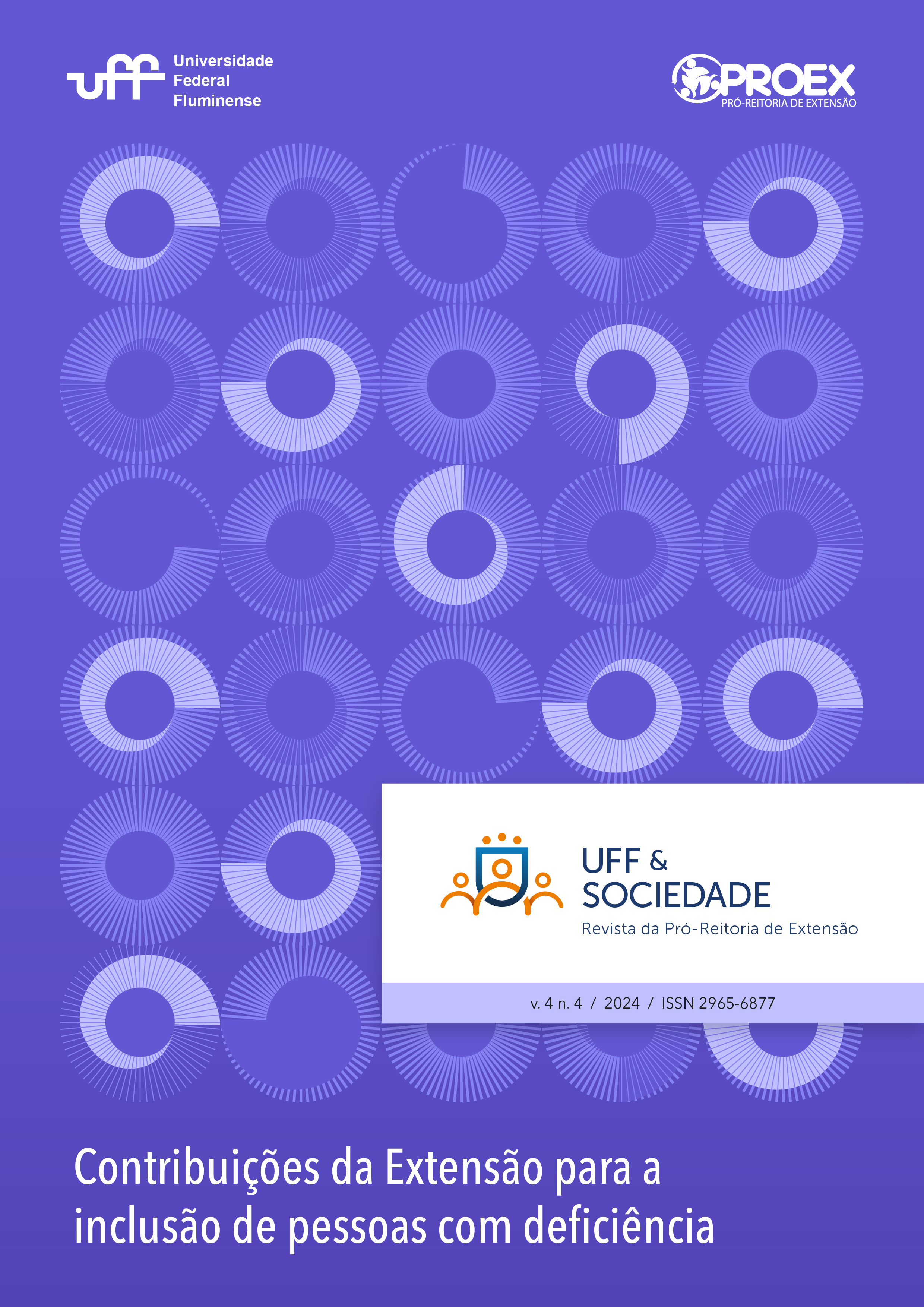Identification of autism spectrum disorder to promote accessibility and inclusion in undergraduate education
Keywords:
Autism spectrum disorder, Accessibility, Evaluation assessment in adulthoodAbstract
The extension action of the Center for Studies and Research on Autism (NEPA) in partnership with Secretariat for Accessibility and Inclusion (SAI) is presented to evaluate the diagnostic hypothesis of autism spectrum disorder (ASD) in undergraduate students who require voluntary investigation in order to have their accessibility rights guaranteed in their respective undergraduate courses to minimize suffering in learning environments. The objective of the investigation is to provide accessibility to those who are encountering challenges due to their singularities related to ASD. The investigation of suspected ASD is carried out using the following assessment instruments: Autism Diagnostic Interview (ADI-R), Autism Diagnostic Observation (ADOS-2), Social Responsiveness Scale – 2 (SRS-2) and Autistic Traits Scale. The evaluation of the diagnostic hypothesis of autism among the public of higher education students at UFF favors accessibility, as it supports SAI for the implementation of actions to provide a better quality of life for students in the classroom, who will necessarily benefit from a harmonious environment, especially when there is cooperation between the teaching team and the accessibility center.
References
APA – AMERICAN PSYCHIATRIC ASSOCIATION. Manual Diagnóstico e Estatístico de Transtornos Mentais: DSM-5-TR. 5.ed., texto revisado. Porto Alegre: Artmed, 2023. Disponível em: https://www.institutopebioetica.com.br/documentos/manual-diagnostico-e-estatistico-de-transtornos-mentais-dsm-5.pdf. Acesso em 25 de junho de 2024.
CHRISTOPHER, Kourtney; LORD, Catherine. Best practice assessments for autism spectrum disorders in schools. Psychology in the Schools, [S. l.], v. 59, p. 1454-1468, 2022. DOI: https://doi.org/10.1002/pits.22680. Acesso em 11 de julho de 2022.
HULL, Laura et al. "Putting on My Best Normal": Social Camouflaging in Adults with Autism Spectrum Conditions. Journal of autism and developmental disorders, [S. l.], v. 47, n. 8, p. 2519-2534, 2017. Disponível em: https://link.springer.com/article/10.1007/s10803-017-3166-5. Acesso em 25 de junho de 2024.
LAI, Meng-Chuan, BARON-COHEN, Simon. Identifying the lost generation of adults with autism spectrum conditions. Lancet Psychiatry, [S. l.], v. 2, n. 11, p. 1013-1027, nov. 2015. DOI: https://doi.org/10.1016/S2215-0366(15)00277-1. Acesso em 25 de junho de 2024.
LORD, Catherine et al. Escala de Observación para el Diagnóstico del Autismo – 2, Madrid: TEA Ediciones: 2012.
OMS – ORGANIZAÇÃO MUNDIAL DA SAÚDE. Classificação Internacional de Doenças - 11ª revisão. Genebra: OMS, 2019.
RUTTER, Michael; COUTEUR, Ann Le; LORD, Catherine. Entrevista para el Diagnóstico del Autismo – 2. ed. Madrid: TEA Ediciones, 2011.






